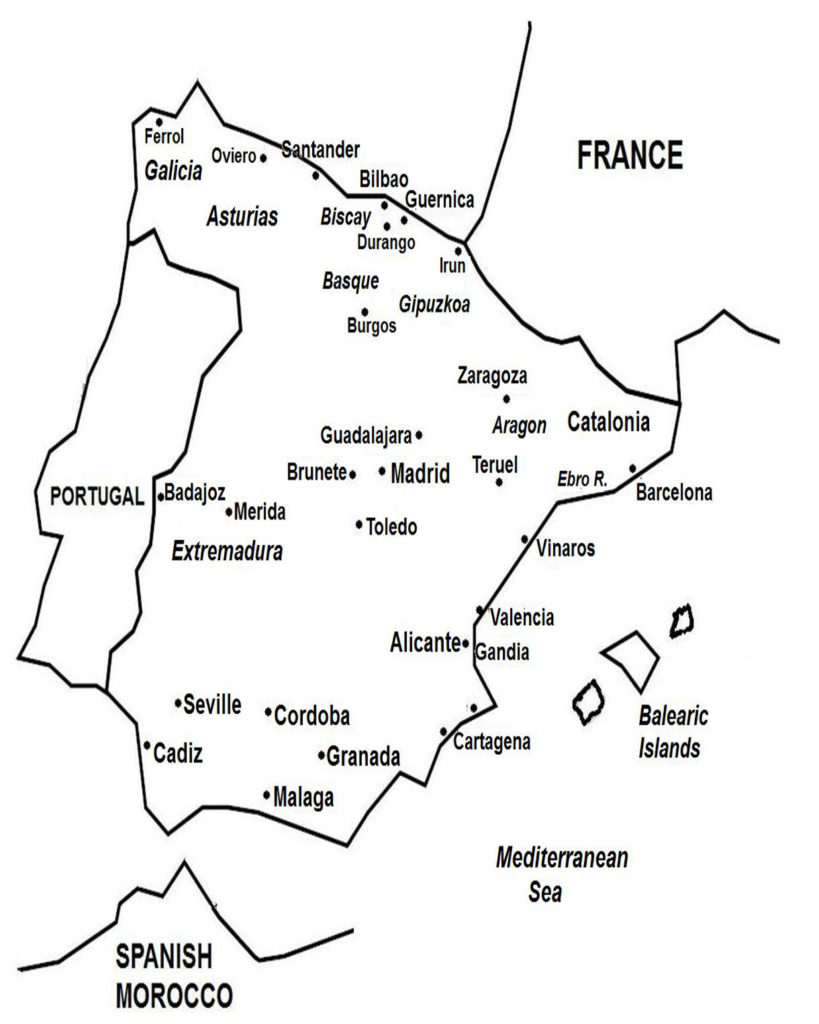On July 6, 1937, Republican forces launched an offensive on the Nationalists to relieve pressure on the besieged capital Madrid during the Spanish Civil War. The attack gained ground but soon sputtered. With the Nationalists launching a counter-offensive, the Republicans were forced to retreat after suffering heavy losses in men, particularly in the ranks of the International Brigades, as well as material. The International Brigades were a militia organized by the COMINTERN (Communist International) based in Paris, and consisted mostly of communist civilian volunteers from many countries including the Soviet Union, France, United States, Britain, France, Germany and Italy. In total, some 35,000 – 50,000 International Brigades volunteers fought in the Spanish Civil War.
The contribution of the Condor Legion, the German expeditionary air force, to the Nationalist victory, allowed Germany to gain substantial trade concessions from the Nationalists, with the latter agreeing to send raw materials to Germany.

(Excerpts taken from Wars of the 20th Century – Volume 3)
Aftermath of the Spanish Civil War Following the war, General Franco established a right-wing, anti-communist dictatorial government centered on the Falange Party. Socialists, communists, and anarchists, were outlawed, as were free-party politics. Political enemies were killed or jailed; perhaps as many as 200,000 lost their lives in prison or through executions. The political autonomies of Basque and Catalonia were voided. These regions’ culture, language, and identity were suppressed, and a single Spanish national identity was enforced.
After World War II ended, Spain became politically and economically isolated from most of the international community because of General Franco’s association with the defeated fascist regimes of Germany and Italy. But with increasing tensions in the Cold War between the United States and Soviet Union, the U.S. government became drawn to Spain’s staunchly anti-communist stance and its strategic location at the western end of the Mediterranean Sea.
In September 1953, Spain and the United States entered into a defense agreement known as the Pact of Madrid, where the U.S. government infused large amounts of military assistance to Spain’s defense. As a result, Spain’s diplomatic isolation ended, and the country was admitted to the United Nations in 1955.
Its economy devastated by the civil war, Spain experienced phenomenal economic growth during the period from 1959 to 1974 (known as the “Spanish Miracle”) when the government passed reforms that opened up the financial and investment sectors. Spain’s totalitarian regime ended with General Franco’s death in 1975; thereafter, the country transitioned to a democratic parliamentary monarchy which it is today.
